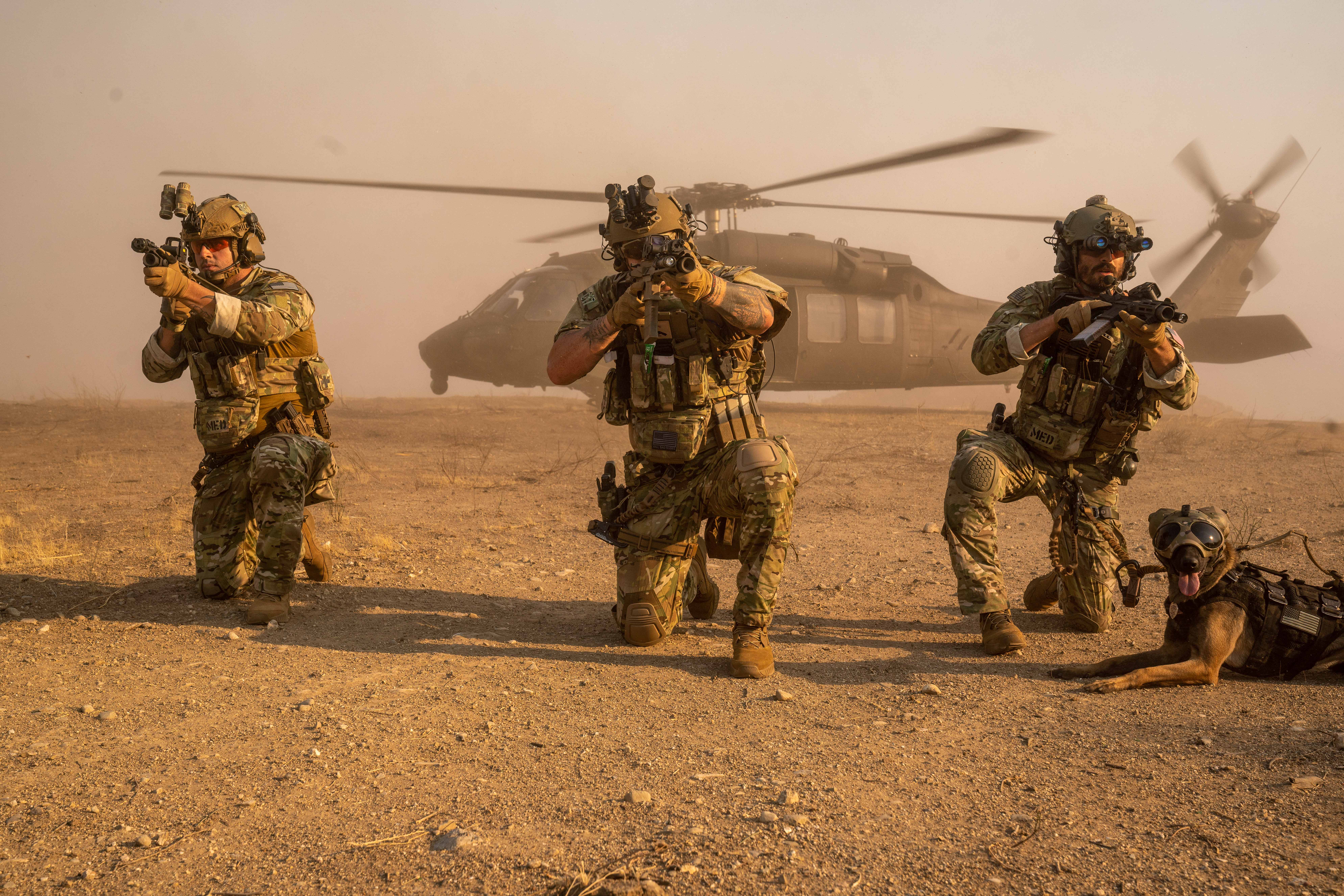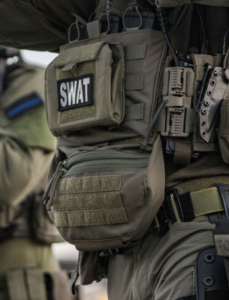How To Choose The Right Backpack For Emergency Situations

When disaster strikes, your life may depend on your level of preparedness. Having the right gear can save your life. Your tactical emergency backpack should be durable, organized, and allow you to stay mobile in tough situations. In response to civil unrest, natural disasters, or combat operations, a loaded tactical pack can mean the difference between survival and chaos.
A tactical go-bag is as much about the packing as it is about the supplies; it’s about how quickly and easily you can access them when every second counts. Let’s explore how to choose the optimal tactical backpack for an emergency.
Shop durable tactical packs at Chase Tactical now!
How to Choose the Right Tactical Backpack
The best backpack for a crisis should be durable, organized, and comfortable enough to wear for an extended duration in case of an emergency. Here are the key aspects to consider:
Size and Capacity
The 35-50 liter pack is typically ideal for a 72-hour kit, providing sufficient space for essentials without being overly large. Avoid enormous packs that encourage excessive loading. The ideal tactical backpack is large enough to accommodate your gear but small enough to keep you mobile. If you think you will need additional equipment, consider using a modular pack with MOLLE webbing, which allows you to attach extra pouches easily.
Durability and Material Strength
In a tactical emergency, your backpack needs to withstand harsh conditions. Look for materials like Cordura or ripstop nylon that are abrasion-resistant and built for durability. Zippers are a gold standard for reliability, and your pack should be water-resistant (ideally waterproof), especially if you’re operating in unpredictable weather. A rain cover is a bonus for additional protection against the elements.
Comfort and Ergonomics
Convenience takes priority when undertaking long hikes in emergency scenarios. Look for a tactical backpack with padded shoulder straps that evenly distribute the weight. A sternum strap and hip belt will help transfer the weight from your shoulders to your lower region, reducing strain. A back panel with ventilation can reduce sweating and provide more airflow, keeping you cooler during extended wear.
Organization and Accessibility

Speed and efficiency are the last things you need in a tactical emergency. Look for a pack with several compartments to keep your gear organized. You’ll need convenient-access pouches for items like your knife, flashlight, and map, but more secure compartments for your food, water, and shelter supplies. MOLLE webbing packs are ideal for attaching external gear as needed. The concept is to have it all set up so you can reach in and grab what you need quickly.
Adaptability to Mission and Environment
A tactical backpack must be suitable for your mission. For missions in cities, carry a low-profile backpack that is inconspicuous and avoids unwanted attention. For wilderness or combat zones, a military-style backpack with a tougher construction should be chosen. Camouflage-design backpacks can be useful for staying covert when discretion is key. The backpack should be appropriate for your terrain and climate to keep your equipment safe and dry in any situation.
Weight Considerations
A tactical emergency backpack should not weigh more than 15-20% of your fully loaded body weight. Overloading the pack can lead to fatigue and constrain your mobility. Remember, a tactical situation typically demands agility, so don’t overload it. Utilize lightweight, multi-purpose equipment to minimize weight without compromising on essentials.
Essential Items in Your Tactical Emergency Backpack
Now that you have a clue on how to choose the pack, the next step is selecting the right backpack supplies. A tactical emergency bag should be stocked with life-saving essentials for at least 72 hours and be tailored for use in tactical operations. The following items are must-haves for any situation:
Water and Hydration Tools
Hydration is always beneficial in an emergency, but especially in a tactical emergency. You will want a hydration pouch for easy, hands-free drinking and a portable water filter, such as a Sawyer or LifeStraw, to purify water from contaminated sources.
Food and Nutritional Supplies
Add calorie-dense, non-perishable foods that are light and easy to eat when under stress, such as MREs or energy bars. Avoid foodstuffs that require extensive preparation or cooking.
First Aid Kit
A tactical first aid kit needs to be more comprehensive than just the essentials. In addition to bandages, antiseptics, and painkillers, include tourniquets, combat gauze, pressure bandages, and chest seals for more grievous wounds. Have your kit equipped to treat minor cuts and more grievous trauma.
Emergency Communication Tools
One requires a hand-crank or battery-powered tactical radio, which is utilized tactically for its current capabilities. Add a satellite communicator (e.g., Garmin inReach) for talking when off the grid. A solar charger is needed to charge communication tools without relying on a grid.
Shelter and Warmth
A compact thermal bivy sack or tactical tarp can provide emergency shelter from the elements. Include a space blanket for warmth, and pack cold-weather gear if you’re in a harsh climate. The goal is to stay sheltered and concealed while minimizing exposure to the environment.
Tools, Navigation, and Personal Defense
A quality multi-tool will prove useful for a variety of jobs. A tactical light (preferably with a strobe) will be useful for signaling and disorienting attackers. Don’t underestimate the utility and defense of a combat knife, or the value of pepper spray or a tactical baton for less-than-lethal personal defense. Don’t forget to include navigation aids such as maps, compasses, or GPS devices.
Final Thoughts
Choosing the right backpack for emergencies is not just about grabbing a bag off the shelf. It’s about selecting a durable, comfortable, well-organized system that can carry life-saving tools and supplies. Start by identifying what you’ll pack and tailor your backpack choice around those needs. From rugged terrain to crowded city streets, your emergency bag should move with you, not against you.
Being prepared doesn’t mean living in fear—it means being ready to respond when it matters most. Invest in a reliable backpack and take the time to pack it smartly. In an emergency, it might just be your most trusted companion.
Frequently Asked Questions
How often should I update or inspect my emergency backpack?
You should check your emergency backpack every six months to ensure it is fully stocked and ready for use. Rotate perishable items, test essential gear such as flashlights and radios, and adjust the contents according to seasonal or personal changes.
Is a tactical backpack better for emergencies?
Tactical backpacks are durable and modular, making them a popular choice among professionals. However, they may draw unwanted attention in urban settings. Choose one that suits your specific environment.
Can children carry their emergency backpacks?
Yes, but keep them light and age-appropriate. Children’s emergency backpacks should include essentials such as snacks, identification, a comfort item, and basic safety gear—nothing too heavy or complex.

